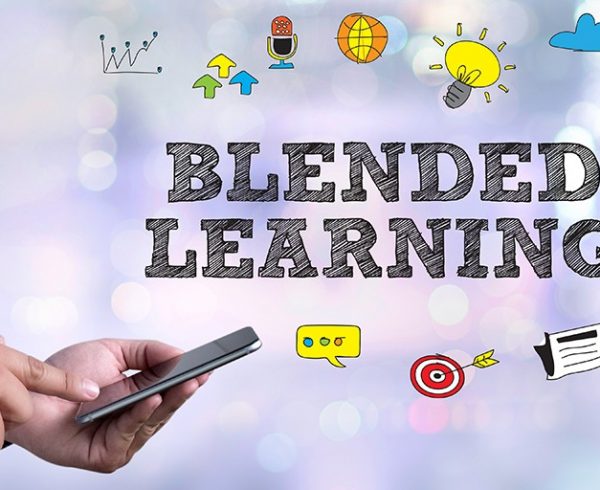Leveraging the best of both offline and online modalities, blended learning solutions are a popular trend in today’s corporate world that makes it possible for organizations to formulate an effective training strategy for a large number of learners.
An excellent pedagogical approach, it efficiently blends digital and live classroom components, typically with a minimum of 30% of learners’ time being spent on digital components.
Further, this learning approach can be extremely cost-effective as it allows certain modules of learning to be done online, with asynchronous scheduling where employees aren’t required to travel or attend in-person training, saving the organization a significant amount of money in travel, boarding and trainer costs.
Research has also shown that implementing a robust blended strategy brings down the training costs and allows organizations to divert their resources to other areas of the overall budget, leading to an effective corporate training program.
Table of Contents:
- Five Tips to Building a Cost-effective Blended Learning Solution
1. Consider Scale, Reach and Budget
2. Prioritize the Content
3. Experiment with New Blended Learning Concepts and Solutions
4. Assess the Tools and Skills You Need in Your Learners
5. Personalize Learning Modules by Roles - To Sum it Up
5 tips to building a cost-effective blended learning solution
In this post, we explore how to use blended learning solutions in corporate training in order to create a more cost-efficient, immersive and engaging experience for the corporate learners.
1. Consider Scale, Reach and Budget
When it comes to designing a successful and cost-efficient blended learning framework, it should both work for individual learners and make complete business sense along with offering a solid ROI.
How can you do this?
a) Identify whether your users are remote or spread globally. This is important because organizing physical events can be extremely expensive as you might have to reach a large number of remote learners.
The ideal way to manage this is by utilizing digital learning to the maximum capacity or hosting an online virtual event followed by providing support to virtual or local coaches to begin a discussion so that they can take learning and sharing forward.
b) Do a thorough assessment of the cost per head of different blended options. Blending approaches that support learning over a longer period of time with short and focused interventions brings great results in terms of performance and are cost-effective.
2. Prioritize the Content
To save time and cost, your blended learning solution design should prioritize content that can be taught over time. What this essentially means is that the foundational or critical content should be taught first, so that the learners can go back and apply it on the job.
Less critical content, on the other hand, can be made available either as just-in-time performance support or offered as a subsequent course to improve performance, learning retention, and learner satisfaction.
3. Experiment with New Blended Learning Concepts and Solutions
When it comes to seeking and expecting answers to their questions, modern learners want a seamless experience with updated, relevant and personalized information.
A successful and budget-friendly learning strategy, in such a scenario, should be people-centric, offering engaging experiences to help them make changes in areas they need most, or will add meaningful impact to what they do.
The best approach here is to constantly experiment with various blended learning concepts to meet the specific goals and needs of the target audience by-
- Considering different kinds of resources and activities to help the learners get there either on their own and in large groups. Think about these questions – Which parts of the training can be done virtually and online? Where does it make the most sense to get learners together? Should you utilize mentors or coaches?
- Conceptualizing and focusing on how the resources and learning activities would help on the job and in moments of need. Make sure that the blended learning strategy you design should help people explore and practice new skills that are relevant to their job profile.
- Working around different combinations and concepts such as going digital on one aspect and more face-to-face on another or finding a middle ground that works best both learning and cost-wise.
4. Assess the Tools and Skills You Need in Your Learners
To get the best results on a low budget, your blended learning strategy should consistently bring in new tools and skills into your learning team or outsource whenever needed to get what you exactly need.
The biggest advantage of blended learning solutions is that you can use the best of your existing content and software solutions. Use and repurpose your content, software tools, and communication channels to provide a cohesive learning experience. Using your existing systems also makes it comfortable for learners who are already familiar with your present software and use it regularly.
The idea here is to test out new blended learning design concepts and tweak them as per the specific needs of your learners. For e.g., if you already have a course module, be it online or face-to-face, break it down into smaller chunks or play with the format to give the course a blended twist that will help you drive better learner engagement.
Learn Why You Should Switch to Blended Learning for Better Learning Outcomes
Guide:
How to Choose the Right LMS for Your Business
5. Personalize Learning Modules by Roles
Lastly, make sure that your blended learning approach enables delivery of content customized as per the learner’s role/job profile.
For e.g., a procurement worker doesn’t have to sit through content that specifically applies to the procurement manager, and vice versa. This can help you reduce cost and time, along with achieving higher employee satisfaction and engagement.
This kind of a personalized learning map for individual learners can act as a great communication and coordination tool as well. This is especially relevant because a blended learning course has many disparate elements, and a personalized, single access learning module eliminates the risk of uncertainty making the learning experience super smooth and positive for employees.
To Sum it Up
More and more enterprises today are adopting blended learning over traditional learning methods simply because of the benefits it offers in terms of cost-saving along with empowering employees to improve their job performance, which is the core objective of any training program. The best way to use a blended learning approach to your advantage is to leverage the blended design to help you enlarge scale, reduce cost, and increase reach of your strategies.
The key benefit of using a well-thought-out blended learning approach is its ability to offer more personalized and bite-sized learning experiences for your employees and a wider reach to your target audiences, irrespective of their physical location.
Related:
- How to Select the Right Vendor for your Goals
- Only 5 Employee Training Software You Need to Know About!
- Guide to use Blended Learning for Corporate Training
- How to Leverage your LMS to Create a Blended Learning Environment
- How to Enhance Your Existing Corporate Training Programs
- Top eLearning Development Companies for Enterprises & SMBs
- 8 Reasons Why Your Business Requires an eLearning Platform
- Can Customized Learning Solutions Solve Critical Business Problems
- Benefits of Investing in Custom eLearning Courses for your Enterprise











